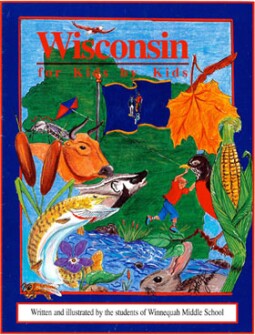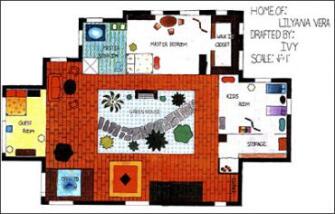Let’s face it. Studying a new set of standards is not exactly an inspirational experience for many educators. If anything, it may be unnerving, as they wonder: “How am I going to do this? What should this look like in my classroom?”

Those seeking some concrete and creative ideas to tackle the Common Core State Standards may find helpful a Web resource I recently discovered that serves up lots of examples of student work to bring the common core to life (plus some standards in other disciplines). Developed jointly by Expeditionary Learning and the Harvard Graduate School of Education, the online collection of exemplary student work includes a heavy dose of student creativity and the arts.
Examples include an illustrated book on snakes authored by 2nd graders; a field guide for plants in Maine developed by 7th graders; a history book about the Crusades crafted by high schoolers that explores the science and math behind the weapons used; and architectural blueprints from 5th and 6th graders.
“The common core is a better set of standards than I have ever seen us use, but it’s still just a set of standards,” said Ron Berger, the chief program officer at Expeditionary Learning, which works with districts and charter schools that embrace the organization’s school improvement model. “Not a lot of teachers are going to look at it and feel inspiration. On the other hand, if we could find those standards manifest in beautiful, great student work, that could inspire people.”
Berger said the collection of student project work has been gathered over many years, long before the common core was dreamed up. But over the past year, graduate students at Harvard have selected works from the collection and identified particular standards they match, both from the common core and beyond. And just this year, the collection from the Center for Student Work has moved online as an open resource for educators.

The student work is drawn primarily from public schools in low-income communities, many of them part of the Expeditionary Learning network. As the center website notes, “Such projects can be transformational for students—giving purpose to learning, clarity to standards, and a reason to strive for excellence.”
Many of the examples illustrate the cross-disciplinary potential of the common core, including the power of the arts as a vehicle for student learning, and for demonstrating that learning.
Now I’ll dig just a little deeper into a few examples featured in the collection, including some of the references to the common core. The links I’ve included provide background and analysis of each project, including specific standards referenced. (I do not include all standards cited for each.)
• What Snake Am I?
Second graders at the Conservatory Lab Charter School created this book during an in-depth study on snakes. It includes such information about the various snakes featured as their habitat, food, and predators, and a realistic drawing of each snake. Students worked on multiple drafts of their artwork, all of which include carefully drawn scales, as well as accurate color and patterning.
Standards: Writing 2.2, Writing 2.7, Language 2.1
• Wisconsin for Kids and by Kids
This book celebrating the people and places of Wisconsin was created by students at the Winnequah Middle School in Monona, Wis., as a way to introduce elementary students to unique features of the state. The students extensively researched the history of people, places, and events, as well as the current information about their state. All the writing and illustrations are student originals. Students went through many rounds of drafting and rewriting/redrawing, through peer, teacher, and outside expert feedback. This book was professionally produced, has an ISBN number, and was sold to schools throughout the state.
Standards: Language 6.6, Writing 6.3, Writing 8.4 (among many others)

• Home of Ivy Olcott
Students in the 5th and 6th grades at Shutesbury Elementary School in Shutesbury, Mass., developed architectural blueprints, including this one. It’s meant to be a realistic representation of a home that in design, expense, and square footage is appropriate for a particular fictional character. Each student went through at least four drafts and received intensive feedback, including critiques from a professional architect on most drafts. The blueprints follow standard architectural conventions, follow constraints in square-foot expenses, and adhere to standard residential building codes.
Standards: Measurement and Data 5.1, Ratios and Proportional Relationships 6.3, Mathematical Practice 6 (attend to precision).
Note: The three images were retrieved from the website of the Center for Student Work.